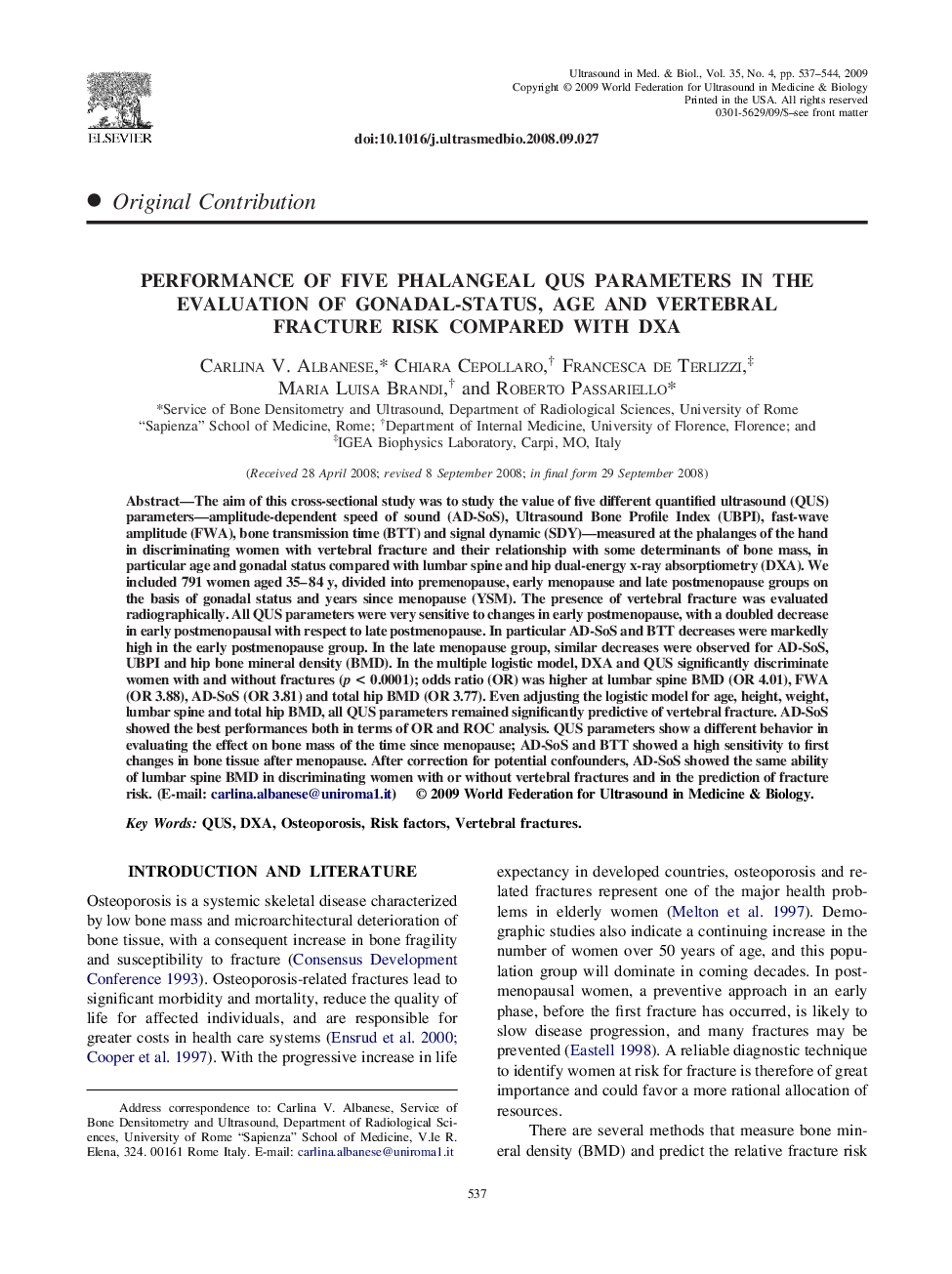| کد مقاله | کد نشریه | سال انتشار | مقاله انگلیسی | نسخه تمام متن |
|---|---|---|---|---|
| 1762399 | 1019690 | 2009 | 8 صفحه PDF | دانلود رایگان |
عنوان انگلیسی مقاله ISI
Performance of Five Phalangeal QUS Parameters in the Evaluation of Gonadal-Status, Age and Vertebral Fracture Risk Compared with DXA
دانلود مقاله + سفارش ترجمه
دانلود مقاله ISI انگلیسی
رایگان برای ایرانیان
کلمات کلیدی
موضوعات مرتبط
مهندسی و علوم پایه
فیزیک و نجوم
آکوستیک و فرا صوت
پیش نمایش صفحه اول مقاله

چکیده انگلیسی
The aim of this cross-sectional study was to study the value of five different quantified ultrasound (QUS) parameters-amplitude-dependent speed of sound (AD-SoS), Ultrasound Bone Profile Index (UBPI), fast-wave amplitude (FWA), bone transmission time (BTT) and signal dynamic (SDY)-measured at the phalanges of the hand in discriminating women with vertebral fracture and their relationship with some determinants of bone mass, in particular age and gonadal status compared with lumbar spine and hip dual-energy x-ray absorptiometry (DXA). We included 791 women aged 35-84 y, divided into premenopause, early menopause and late postmenopause groups on the basis of gonadal status and years since menopause (YSM). The presence of vertebral fracture was evaluated radiographically. All QUS parameters were very sensitive to changes in early postmenopause, with a doubled decrease in early postmenopausal with respect to late postmenopause. In particular AD-SoS and BTT decreases were markedly high in the early postmenopause group. In the late menopause group, similar decreases were observed for AD-SoS, UBPI and hip bone mineral density (BMD). In the multiple logistic model, DXA and QUS significantly discriminate women with and without fractures (p < 0.0001); odds ratio (OR) was higher at lumbar spine BMD (OR 4.01), FWA (OR 3.88), AD-SoS (OR 3.81) and total hip BMD (OR 3.77). Even adjusting the logistic model for age, height, weight, lumbar spine and total hip BMD, all QUS parameters remained significantly predictive of vertebral fracture. AD-SoS showed the best performances both in terms of OR and ROC analysis. QUS parameters show a different behavior in evaluating the effect on bone mass of the time since menopause; AD-SoS and BTT showed a high sensitivity to first changes in bone tissue after menopause. After correction for potential confounders, AD-SoS showed the same ability of lumbar spine BMD in discriminating women with or without vertebral fractures and in the prediction of fracture risk. (E-mail: [email protected])
ناشر
Database: Elsevier - ScienceDirect (ساینس دایرکت)
Journal: Ultrasound in Medicine & Biology - Volume 35, Issue 4, April 2009, Pages 537-544
Journal: Ultrasound in Medicine & Biology - Volume 35, Issue 4, April 2009, Pages 537-544
نویسندگان
Carlina V. Albanese, Chiara Cepollaro, Francesca de Terlizzi, Maria Luisa Brandi, Roberto Passariello,